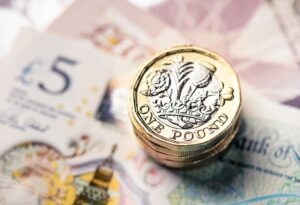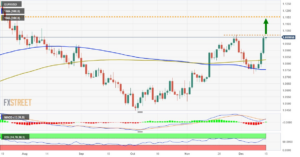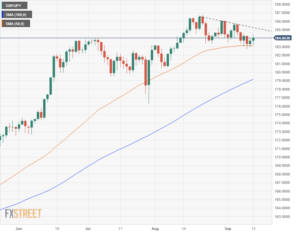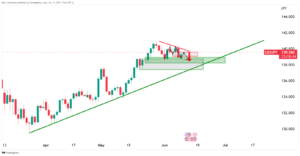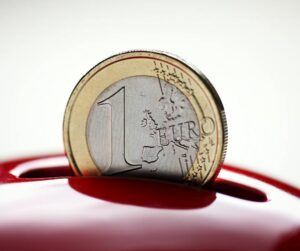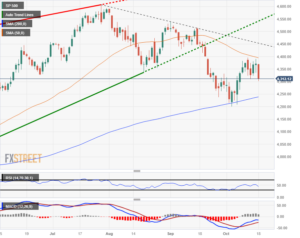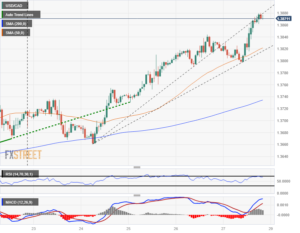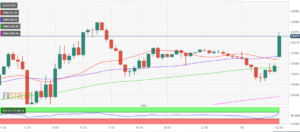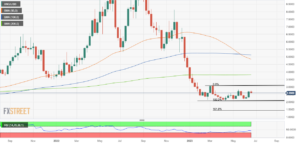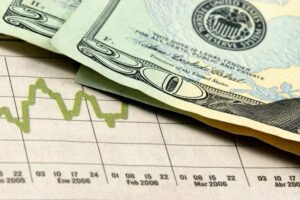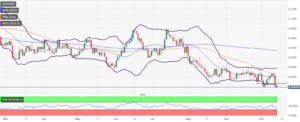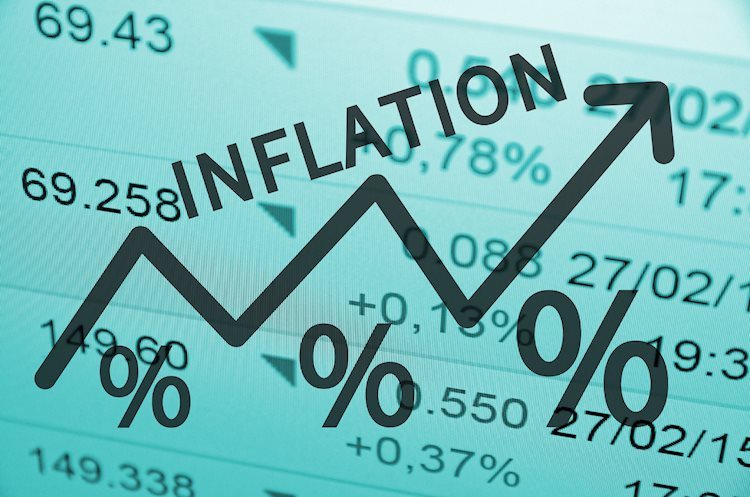
The Fed’s preferred inflation gauge, the Core Personal Consumption Expenditure (PCE), will be released by the US Bureau of Economic Analysis (BEA) on Friday, May 26 at 12:30 GMT and as we get closer to the release time, here are the forecasts of economists and researchers of four major banks.
Core PCE is expected to stay at 4.6% year-on-year while rising 0.3% in April (MoM). The headline is seen increasing by 0.4% in April, and a slowdown in the annual rate from 4.2% to 3.9%.
TDS
“We expect core PCE inflation to tick a tenth higher to 0.4% MoM in April, matching the core CPI’s MoM gain though there’s a non-negligible chance it prints 0.3% (our unrounded forecast is 0.37%). The YoY rate likely rose a tenth to 4.7%.”
NBF
“In April, the annual core PCE deflator may have remained unchanged at 4.6%.”
CIBC
“With the PCE price index weighting medical care services (a disinflationary force) higher than the CPI basket, but housing (an inflationary force) lower, the monthly seasonally adjusted increase in core PCE should be at least a tick weaker than ex food/energy CPI. However, that would leave the annual rate only one tick lower than in the previous month, at 4.5%.”
Citi
“Core PCE inflation should remain persistently strong in April, with expectations for a 0.38% MoM increase based on elements of CPI and PPI inflation. While this is a similar increase to 0.41% MoM core PCI, the key core non-shelter services price components may rise by a stronger 0.42% MoM in PCE compared to 0.11% in CPI which should highlight the divergence between CPI and PCE inflation. Our forecasts would imply core PCE inflation rising slightly to 4.7% YoY, although this will also be sensitive to any revisions to PCE data in the second release of Q1 GDP.”
United States Personal Consumption Expenditures – Price Index (MoM)
The Personal Spending released by the Bureau of Economic Analysis, Department of Commerce is an indicator that measures the total expenditure by individuals. The level of spending can be used as an indicator of consumer optimism. It is also considered as a measure of economic growth: While the Personal spending stimulates inflationary pressures, it could lead to rise interest rates. A high reading is positive (or Bullish) for the USD. Read more.
Next release: Friday May 26, 2023 12:30:00 GMT
Frequency: Monthly
Source: US Bureau of Economic Analysis
- SEO Powered Content & PR Distribution. Get Amplified Today.
- PlatoAiStream. Web3 Data Intelligence. Knowledge Amplified. Access Here.
- Minting the Future w Adryenn Ashley. Access Here.
- Buy and Sell Shares in PRE-IPO Companies with PREIPO®. Access Here.
- Source: https://www.fxstreet.com/news/us-core-pce-preview-forecasts-from-four-major-banks-inflation-to-stay-elevated-in-april-202305260642
- :is
- 12
- 2%
- 2023
- 26
- 30
- a
- Adjusted
- also
- Although
- an
- analysis
- and
- annual
- any
- April
- ARE
- AS
- At
- Banks
- based
- basket
- BE
- between
- Bullish
- Bureau
- but
- by
- CAN
- care
- Chance
- closer
- come
- compared
- components
- considered
- consumer
- consumption
- Core
- could
- CPI
- data
- Department
- Divergence
- don
- down
- Economic
- Economic Analysis
- Economic growth
- economists
- elements
- Event
- expect
- expectations
- expected
- For
- Force
- Forecast
- forecasts
- four
- Friday
- from
- Gain
- GDP
- get
- GMT
- Growth
- Have
- headline
- here
- High
- higher
- Highlight
- housing
- However
- http
- HTTPS
- in
- Increase
- increasing
- index
- Indicator
- individuals
- inflation
- Inflation rising
- Inflationary
- Inflationary pressures
- interest
- Interest Rates
- IT
- jpg
- Key
- lead
- least
- Leave
- Level
- likely
- major
- matching
- May..
- measure
- measures
- medical
- medical care
- mom
- Month
- monthly
- more
- of
- on
- ONE
- only
- Optimism
- or
- our
- pce
- persistently
- personal
- plato
- Plato Data Intelligence
- PlatoData
- positive
- ppi
- preferred
- previous
- price
- prints
- Q1
- Rate
- Rates
- Reading
- release
- released
- remain
- remained
- researchers
- revisions
- Rise
- rising
- ROSE
- s
- Second
- seen
- sensitive
- Services
- should
- similar
- Slowdown
- Spending
- States
- stay
- stimulates
- strong
- stronger
- than
- that
- The
- There.
- this
- though?
- time
- to
- Total
- us
- USD
- used
- we
- which
- while
- will
- with
- would
- zephyrnet

